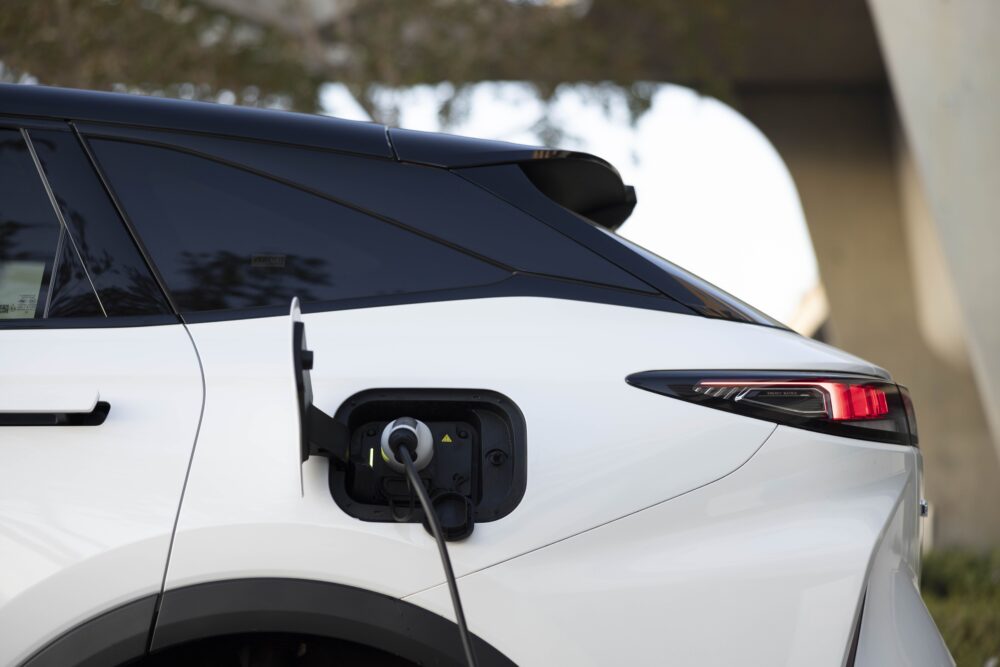Eye-catching: The Omada delivers on all it promises – safety, distance, luxury – and more. Photo: Supplied
Until now, new energy vehicles (NEV) have not really taken off in the South African market. Although the segment experienced a 100.6% year-on-year increase in 2024, it still made up only 3% of the total new-vehicle market.
Factors around the slow performance in new-energy vehicles include range anxiety, charging infrastructure and pricing. By the end of 2024, there was no plug-in hybrid electric vehicle (PHEV) under a million rand.
But Chinese manufacturers have recently released a variety of vehicles into the market that might just be the trigger to get NEVs on the road.
BYD released the Sealion 6 in April and other brands followed suit. Omoda and Jaecoo released PHEV variants of the C9 and J7 in June, Chery released the PHEV variant of the Tiggo 7 Pro and Haval released the H6 GT in a PHEV as well. All of these models come in at under a million rand.
The Mail & Guardian had the Omoda C9 on test for the week.
Omoda is meant to be the luxury arm of Chery, so when you get one, you know that you are in for some amazing technology and brilliant features.
To start off, while there are door handles, there’s also a button that opens your door. This button was convenient and gave me a smooth feeling when doing something as simple as opening the car door.
Then, Omoda takes keyless entry to a new level in this vehicle. There is no stop-start button. Just jump into the vehicle with your key, put your seatbelt on and you are ready to move wherever you need to. The car will not move unless you have your seatbelt on.
I’ve only ever seen this with flagship Volvo models.
Omoda is known for its bold exterior and luxurious interior and the C9 does not disappoint.
The exterior features an eye-catching diamond-shaped grille, daytime running lights, and LED head- and tail-lights. The C9 PHEV boasts 20-inch alloy wheels, a panoramic sunroof and privacy glass for the second row. Red-painted brake callipers hint at sportiness, underscoring the C9 PHEV’s performance capabilities.
The finely stitched leather seats are extremely comfortable for both front and back seat passengers.
The ambient lighting adds an extra dimension to the vehicle as the thin light strip moves above and below the dashboard all around the vehicle to the rear doors.
The interior also features dual 12.3-inch digital displays with one being the instrument cluster and the other being the infotainment screen.
I really love when manufacturers aim to give back seat passengers just as much of an experience as the driver and front seat passenger and Omoda does just that.
The back seats recline electronically, passengers have their own climate controls and the seats are also heated. It was just perfect for the terrible Gauteng cold that were experiencing.
Besides that, the back seats are also spacious and can comfortably fit three adults.
When it comes to driving, Omoda pairs a 1.5-litre turbocharged petrol engine with three electric motors that deliver 440kW of power and 915Nm of torque.
That amount of power is actually very scary, but also very necessary when you need those quick overtakes.
The vehicle moves smoothly when these electric motors and the engine work together. It provides silence to match the comfort that you feel on the inside.
You can choose to drive the vehicle as a hybrid or in full electric mode.
The Omoda C9 PHEV has a 34.5kWh battery that provides up to 150km of full electric range. The 65-litre petrol tank and 34.5kWh battery deliver just as promised.

This makes the C9 PHEV amazing.
Omoda claims that you can get 1 100km of driving on a full tank and full charge and, if you are charging up your battery more regularly, you could even get much more than the claimed figure on your fuel tank.
The 34.5 kWh battery pack can be recharged in 5.5 hours when connected to a home charging wall box. Thanks to its 70kWh fast-charging capability, the C9 PHEV can replenish its battery from 30-80% in 25 minutes when plugged into a DC fast charger.
When driving on the highway, I was allowing my battery to charge and surprisingly, for a 30km drive, my battery would regain about 35km of range, which I could then use in and around town.
Omoda also doesn’t play around with safety. On the launch in June, it put us through a moose test to show the vehicle’s capabilities to assess danger and let the car do the work.
The moose test is a vehicle stability test that simulates an emergency manoeuvre, like swerving to avoid a suddenly appearing obstacle. It assesses how well a car handles sudden direction changes at speed, specifically its stability and resistance to rollover.
The cones were placed just 12m apart and at 60km/h, the Omoda C9 swerved in and out of danger with very little body roll.
Other safety features include adaptive cruise control, automatic braking, blind-spot monitoring, rear cross-traffic alert, rear cross-traffic brake, lane departure warning, lane change assist, lane departure prevention, integrated cruise assist and traffic congestion assist.
Verdict and pricing
The Omoda C9 PHEV comes in at R999 900, highlighting that premium vehicles can still be bought for less than R1 million.
The power, range and posh nature of the vehicle make it totally worth it.
In fact, if this vehicle had a German badge attached to it, it would easily be in the region of R2 million to R2.5 million.
The Omoda C9 comes with a seven-year or 100 000km service plan, seven-year or 200 000km vehicle warranty, a 10-year or 200 000km warranty for certain electric drive unit components, a 10-year or one million kilometre engine warranty, and a 10-year or unlimited km power battery pack warranty (for the first owner, reverting to 10 years or 200 000km for subsequent owners).